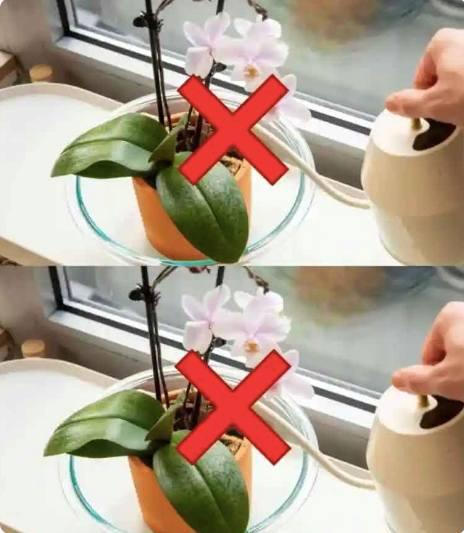ADVERTISEMENT
### **How to Care for Your Orchid After 7 Days: Essential Tips for Orchid Health**
Now that we understand why it’s dangerous to throw away an orchid after just 7 days, let’s discuss how you can care for your orchid during its post-bloom phase and beyond.
**1. Let the Orchid Rest:**
After your orchid finishes blooming, it’s time to let it rest. Don’t be alarmed if the flowers fall off and the plant seems to stop growing. This is part of the natural cycle. Instead of discarding it, give your orchid time to recover. During the dormancy period, reduce watering and avoid fertilizing. Let the plant rest until new growth begins to appear. This could take a few weeks, or even months, depending on the species.
**2. Watering and Humidity:**
During the rest phase, it’s important not to over-water your orchid. While orchids need consistent moisture, they also need proper drainage. Water your orchid only when the soil is dry to the touch. Avoid letting the orchid sit in standing water, as this can cause root rot. Make sure the pot has drainage holes, and if you live in a particularly dry climate, consider placing a humidity tray beneath the pot or using a humidifier to maintain moisture in the air.
**3. Fertilizing:**
Orchids don’t need fertilizing during their dormancy phase. In fact, fertilizing at this time can actually harm the plant, as it doesn’t need the extra nutrients. Once the orchid shows signs of new growth—such as a fresh shoot or leaves—you can resume feeding it with a balanced orchid fertilizer. It’s recommended to use a fertilizer designed specifically for orchids, as these have the correct balance of nutrients for healthy growth.
**4. Light Conditions:**
Light is a critical factor in orchid care. Orchids generally require bright, indirect light for optimal health. During the dormant phase, however, they don’t need as much direct sunlight. Avoid placing your orchid in direct sunlight during this phase, as this can cause the leaves to burn. Instead, place your orchid in a spot where it will receive bright, indirect light for several hours a day.
**5. Pruning and Maintenance:**
After your orchid has finished blooming, you may notice that the flower spikes (the stems that hold the flowers) start to turn brown. It’s important to prune these dead flower spikes carefully. Use clean, sharp scissors to cut the spike back to just above the node (the point where a new flower spike may emerge). Some orchid varieties, like Phalaenopsis, may bloom again from the same spike if it’s trimmed correctly.
If the spike is entirely dead, you can cut it back to the base of the plant. This will encourage the orchid to direct its energy towards producing new roots or shoots.
**6. Repotting:**
Orchids should generally be repotted every 1-2 years, especially if the potting medium is breaking down or the plant has outgrown its pot. However, don’t feel the need to repot immediately after blooming. Wait until the plant has entered its active growth phase, as this is when it will benefit most from a new pot and fresh growing medium. Make sure to use a pot with good drainage and a potting mix designed specifically for orchids (such as bark or sphagnum moss).
—
### **Conclusion: Patience is Key to Orchid Success**
Throwing away your orchid after just 7 days is a dangerous mistake that many orchid owners make. Understanding the natural life cycle of an orchid, and providing proper care during its post-bloom and dormancy phases, is key to ensuring your plant thrives for years to come. Orchids may appear to lose their vibrancy or stop growing after their blooming period, but this is entirely normal. By giving your orchid time to rest and following the proper care guidelines, you can keep your plant healthy and encourage future blooms.
So, the next time you think about discarding your orchid, remember that patience and proper care are essential to helping your orchid flourish. With the right environment and attention, your orchid can reward you with beautiful blooms year after year.
ADVERTISEMENT
ADVERTISEMENT
